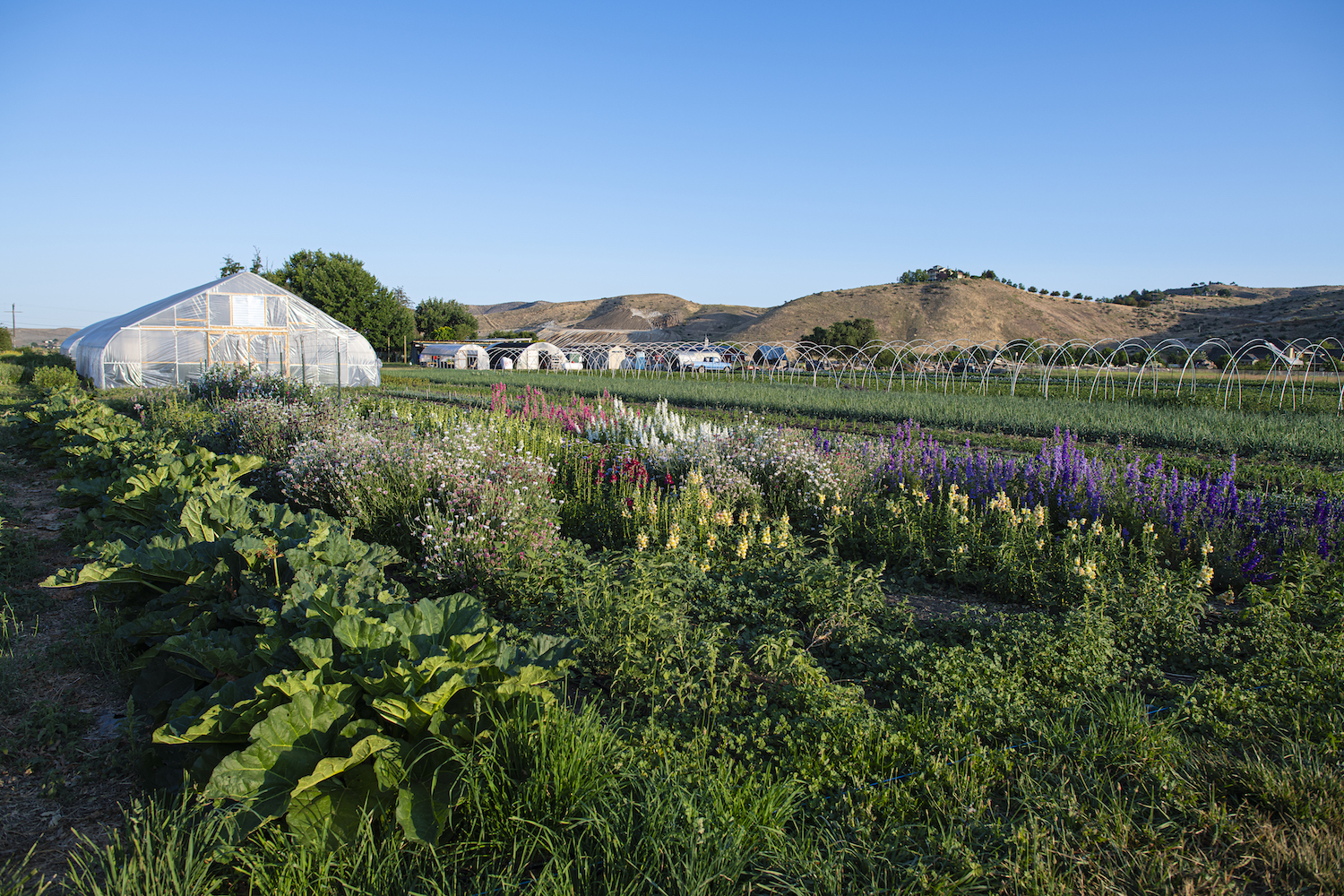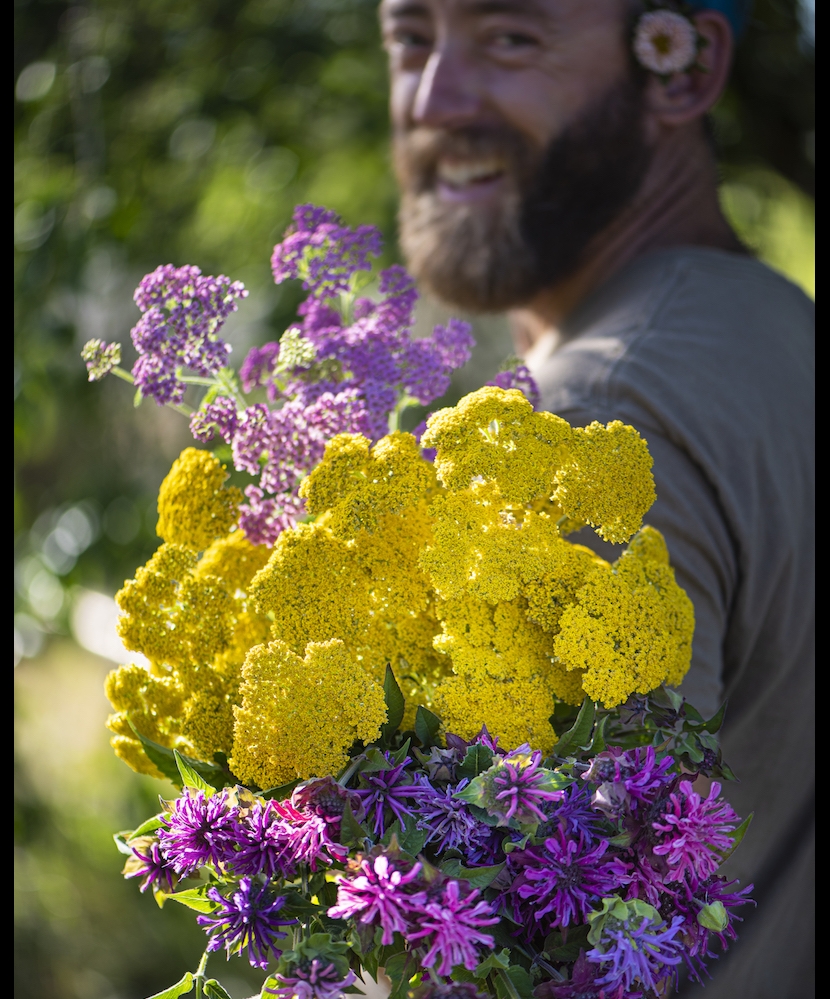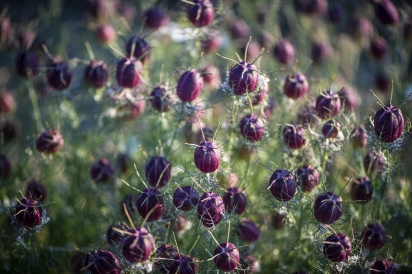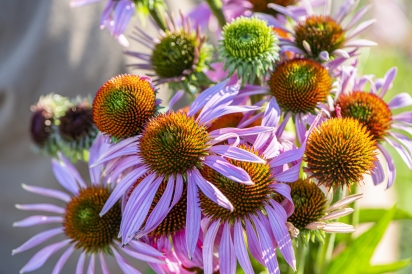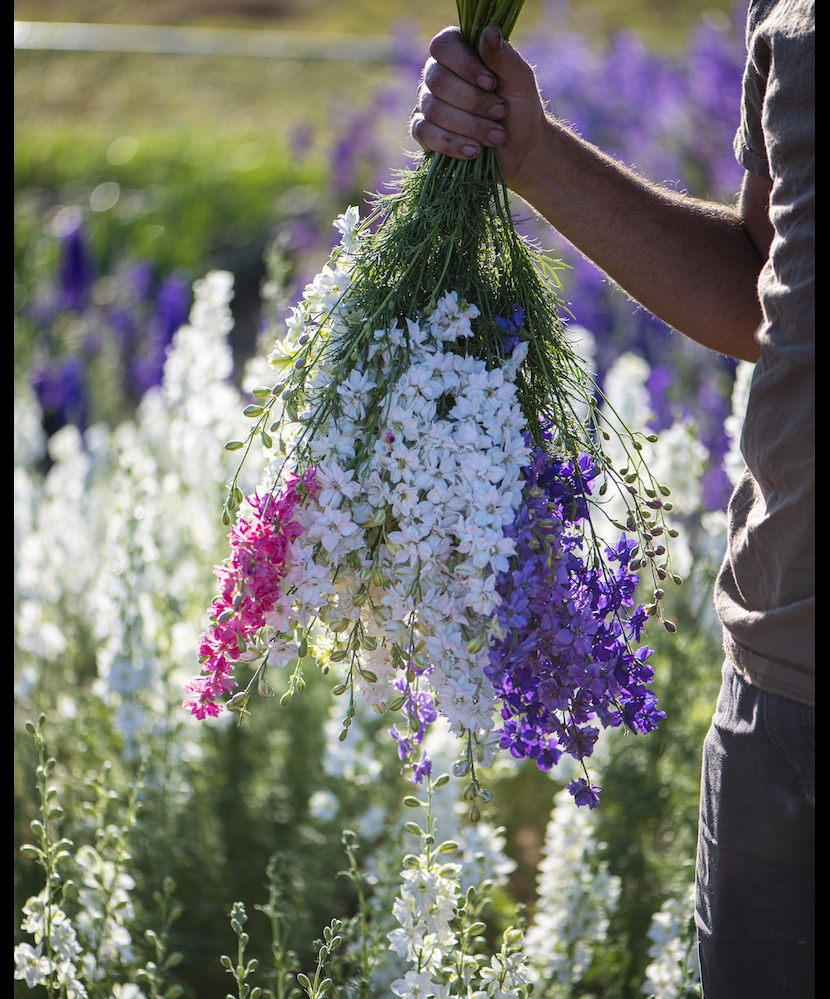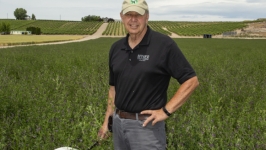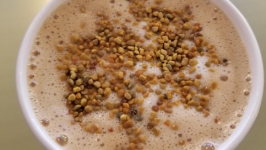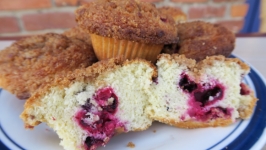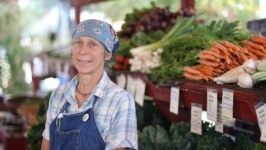Slow Flowers
Though constantly surrounded by carnations, pom poms and gladiolus, Davis McDonald says he didn’t really get flowers when he worked in Idaho’s cut-flower trade. Whether driving a delivery truck between Ontario and Rexburg or packing bouquets into boxes at a warehouse, he says he failed to appreciate the fleeting beauty that Americans spend seven to eight billion dollars chasing after every year. Most of the flowers McDonald handled were grown in South America, shipped to Florida and finally trucked, fading and often scentless, to Boise. He wasn’t enthralled.
Before McDonald got into the business, cut flowers bloomed closer to home—in 1991, American growers grew 64% of U.S. flowers, according to the USDA. But that was also the year the U.S. entered into the Andean Trade Preference Agreement (ATPA) as part of the War on Drugs. It eliminated tariffs on cut flowers in places like Colombia and Ecuador as a way to encourage farmers to leave the cocaine trade. Whether it reduced drug trafficking is debatable, but the ATPA was a little too successful at convincing foreign farmers to try cut flowers. Duty-free South American flowers soon flooded the U.S. market with prices that killed local competition. Today America’s domestic flower production hovers at a slim 20%.
Only when he began farming “and watched flowers go from a little seed to a full-grown plant “ did McDonald start to appreciate cut flowers. Growing organically—first as a farmhand at Peaceful Belly Farm, then as the full-time flower grower and co-owner at Fiddlers Green Farm near Boise—made him even less enthralled with dubious practices that had grown common in the international cut-flower trade: overuse of pesticides and preservatives, a large carbon footprint and dependence on underpaid and sometimes abused workers.
“And that’s kind of what sparked the idea that we could do this a different way,” he says, “to grow flowers a different way.” McDonald believes consumers should start thinking about cut flowers the way they think of local food: as an agricultural product that is best grown locally, sustainably and seasonally. Several small-scale Idaho flower growers have come to the same conclusion, joining what is loosely being called a national Slow Flower movement, echoing many of the tenets of the Slow Food movement.
“Slow Flowers is a response to the dramatic changes of the past 25 years,” reads the Slow Flower Manifesto on the SlowFlowers.com website. “It recognizes that there is a disconnect that has disengaged humans from fragrant garden flowers and small-scale flower farming. It aspires to take back the act of flower growing and recognize it as a relevant and respected branch of agriculture.”
Melissa Frazier, another Peaceful Belly alumnus, arranged flowers for their farm-to-fork dinners nearly a decade ago. “We just walked out into the fields and picked and decorated the tables,” she says. Today she grows flowers at her home in the Collister neighborhood of Boise. She calls it Storybook Farm, raising flowers for weddings, keeping her garden organic, diversified and pollinator friendly.
“It’s kind of a realization of a dream I had of having a huge garden and goats and chickens and cut flowers,” she says.
Only a block away, Sarah Lunstrum recently turned a portion of her large lot into a commercial cut-flower garden, offering a flower CSA and selling at the Boise Farmers Market under the name Dream Farm Flowers.
“I like the idea of growing and providing flowers that are for my neighbors and for my community,” she says, “and also that it doesn’t have an impact on the environment like something that’s shipped in from Ecuador.”
Jodi McClory, with Swallowtail Flowers in Moscow, grows and sells cut flowers at the Moscow Farmers Market, the Moscow Food Co-op and for weddings and florists. Although not certified, she uses organic practices and is keenly aware of what that means for pollinators.
“One of the fun parts of having a flower farm is seeing all the different creatures,” she says. “When I’m there early in the morning harvesting, there’s bumblebees asleep on the flowers and all kinds of solitary bees just laying there, starting to wake up.”
Despite the fact that flowers on farms can attract beneficial insects that help mitigate pests and lessen or eliminate the need for chemical controls, commercial cut flower operations aren’t typically pollinator friendly.
“It’s kind of a funny, contrary thing,” McClory says. “The flowers’ goal in life is to make seeds and so a plant puts out all these beautiful flowers to bring in the pollinators. Then, once it is pollinated, it’s going to try to go to seed as fast as possible.”
That makes pollinators the enemy of bottom-line-focused commercial flower growers, who also favor flower varieties bred to produce little or no pollen, thus eliminating customer complaints about bouquets casting yellow shadows on pristine dining room tables.
To counter that, McClory and other Slow Flower–inspired growers simply share a portion of their crop with pollinators and try to educate customers about the importance of pollen. But awareness of the value of thoughtful flower growing is just beginning, McClory says. She still struggles to persuade flower shops to focus on local flowers.
Looking beyond the bottom line isn’t easy, but when you’re in the field every day, like Davis McDonald was when he began to appreciate cut flowers, you can’t help but see the bigger picture.
Reiley Ney, who owns Flowers With Rye in Boise, says she’s reminded of that bigger picture every morning when she walks onto her farm. She points to a patch of Veronica spicata that hadn’t grown tall enough to catch a florist’s interest.
“So, I ended up not cutting it,” she says. “And just recently I went out in my field and I just saw dozens of bumblebees sleeping in it and it just warmed my heart to see them out there enjoying the flowers that I was planning to cut.”
Like many Idaho flower growers, Ney sees farming not as a singular pursuit of product, but as a collaboration between her and the critters with whom she shares the land.
“Life is messy and flowers are from nature,” she says. “There’s gonna be bugs; there’s gonna be pollen. And that’s a good thing.”
Peaceful Belly Farm
Fiddlers Green Farm | @fiddlersgreenfarm
Slow Flowers | @myslowflowers
Storybook Farm | @storybookfarmboise
Boise Farmers Market | @boisefarmersmarket
Dream Farm Flowers | @dreamfarmflowers
Swallowtail Flowers | @swallowtail_flowers
Moscow Farmers Market
Moscow Food Co-op | @moscowfoodcoop


